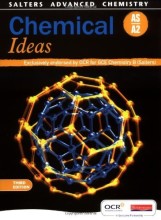Agriculture and Industry - Equilibrium, rates and industry
8 important questions on Agriculture and Industry - Equilibrium, rates and industry
In the Haber process where does the N2 and the 3H2 come from?
N2 = fractional distillation of air
3H2 = natural gases (steam reformation)
In the Haber process, what effect does increasing the temp have? What compromise has to be made?
The equilibrium shifts to the left and lowers the temp by moving in the endothermic direction = making more reactants
- lower temperature is preferred but this means there are fewer collisions so the reaction is slow = compromise at 450 degrees
In the Haber process, what effect does increasing the pressure have? Why is a compromise reached in industry?
Equilibrium shifts to lower the pressure - RHS = increasing the production of ammonia.
In industry a compromise of 200 atm because background-colorany higher would be dangerous and the equipment is very expensive & hard to maintain = very energy intensive
- Higher grades + faster learning
- Never study anything twice
- 100% sure, 100% understanding
What catalyst is used in the Haber process, what effect does it have on the equilibrium?
Fe catalyst - eqm does not change.
What is the equation for the Haber process? What type of reaction is it?
N2 (g) + 3H2 (g) *double headed arrow* 2NH3 (g)
Exothermic
Why are compromises made in the Haber process?
To compromise with the rate.
How can CO2 be removed from a mixture?
Dissolve it in water
Why would oxygen be added to a mixture of methane and steam? (p. 50 Q3(a) revision textbook)
So that the exothermic reaction takes place and providing energy for the endothermic main reaction.
The question on the page originate from the summary of the following study material:
- A unique study and practice tool
- Never study anything twice again
- Get the grades you hope for
- 100% sure, 100% understanding
































